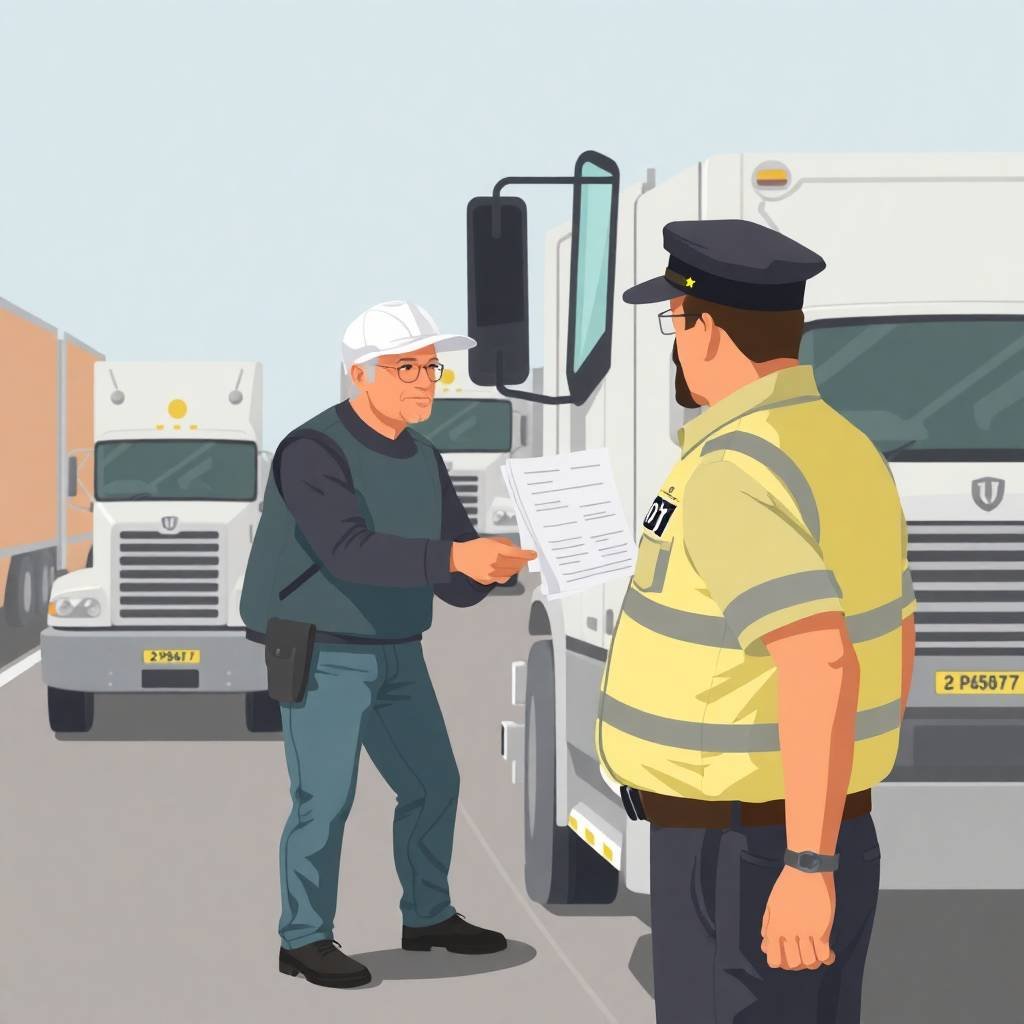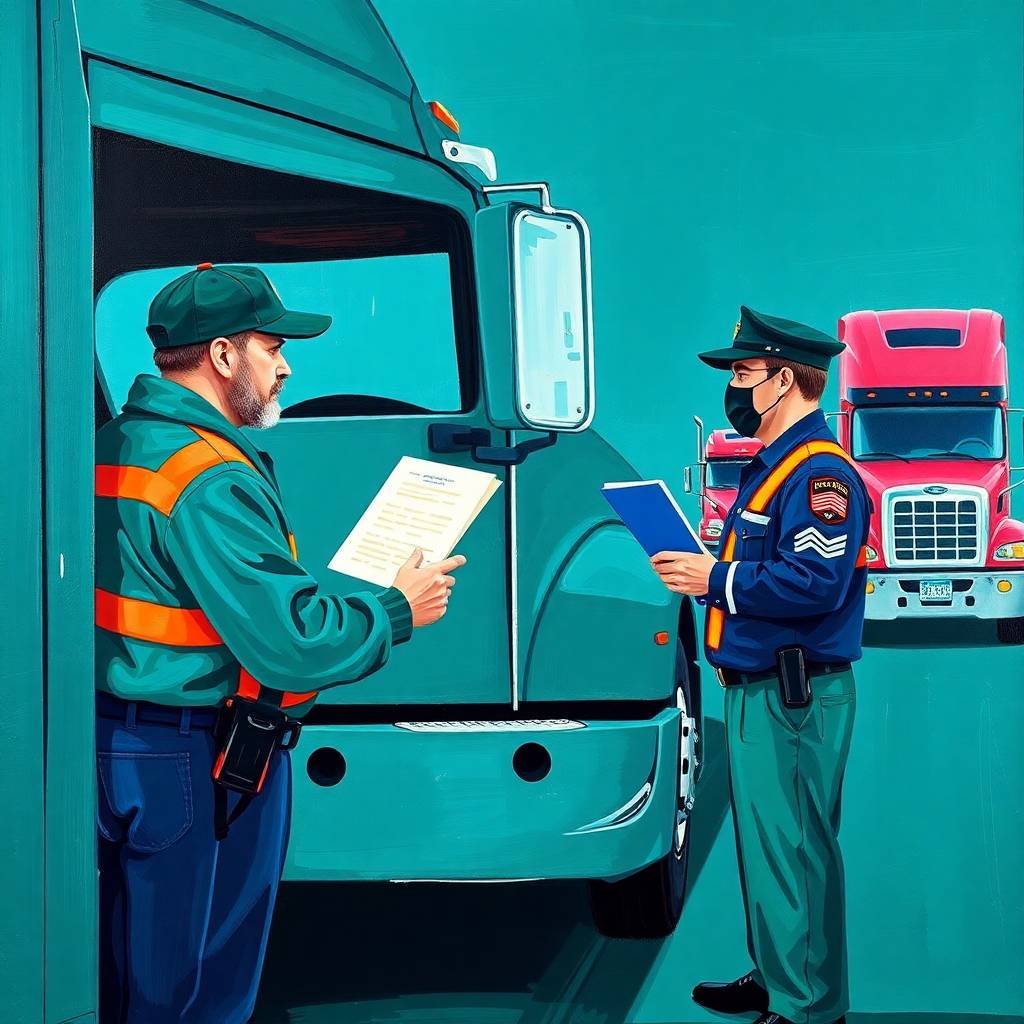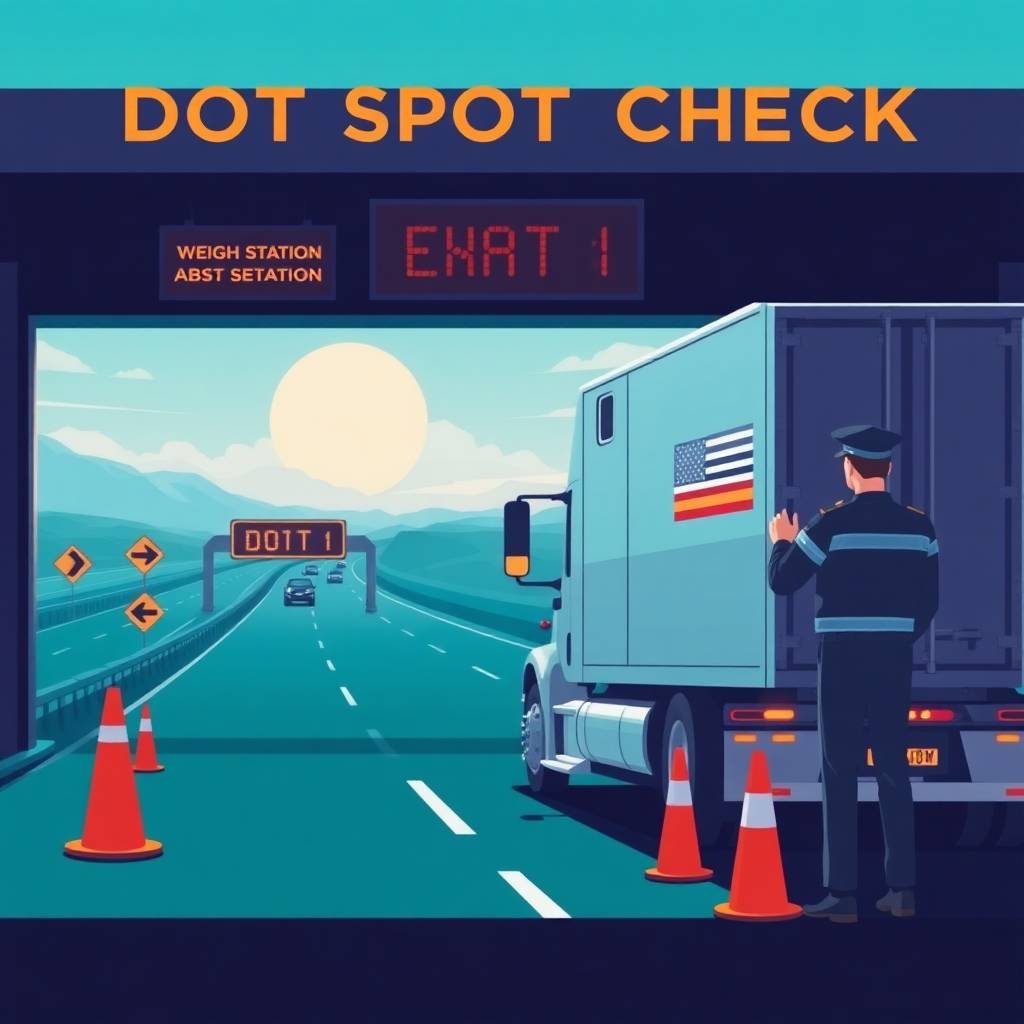1. Understand What Triggers a New Entrant Safety Audit
Entering the trucking industry as a new carrier comes with several regulatory obligations. One of the most critical hurdles is the New Entrant Safety Audit, a mandatory review conducted by the Federal Motor Carrier Safety Administration (FMCSA) within the first 12 months of operation. To ensure compliance and avoid penalties, it’s essential to understand what triggers this audit and how to prepare. In this guide, we’ll provide key New Entrant Safety Audit Survival Tips to help you stay on the right track from the start.
What Is a New Entrant Safety Audit?
The New Entrant Safety Audit is designed to evaluate a carrier’s safety management practices. The FMCSA examines areas such as driver qualifications, vehicle maintenance, hours of service, and drug and alcohol testing. If your processes fall short, your company may be placed out of service until issues are corrected.
The FMCSA provides detailed audit information for new entrants, but navigating the requirements can be overwhelming. For up-to-date insights, visit the U.S. Department of Transportation.
Common Triggers for a Safety Audit
Many assume the audit is a scheduled formality, but specific actions can trigger it earlier or intensify scrutiny. Here are the most common triggers:
- FMCSA Registration: Simply registering with FMCSA as a new entrant puts you in the audit queue.
- Compliance Violations: Issues such as DQ file violations or failed inspections can raise red flags.
- Drug and Alcohol Testing Lapses: Noncompliance with DOT drug and alcohol testing programs or random testing requirements often triggers audits.
- Safety Score Issues: Poor metrics in the FMCSA Safety Measurement System (SMS) can accelerate audits.
- Roadside Inspections: Frequent citations from roadside checks, such as hours-of-service violations, can alert FMCSA.
Essential New Entrant Safety Audit Survival Tips
- Prepare Your DOT Compliance Checklist
Start by reviewing the DOT compliance checklist to ensure your files and systems are in order. - Maintain Your Driver Qualification (DQ) Files
Use DQ file setup and monitoring services to stay compliant and audit-ready. - Stay Updated on Drug Testing Compliance
Understand pre-employment and ongoing drug testing compliance to avoid disqualifications. - Schedule a Compliance Consultation
Book a 30-minute appointment for personalized help with your audit prep. - Utilize Support Services
We offer full DOT audit preparation, UCR filing assistance, and BOC-3 compliance support.
For owner-operators, tailored resources are also available to guide you through every requirement.
Avoid Costly Mistakes
Don’t fall into common traps. Learn about FMCSA compliance mistakes and how to fix them. For broader guidance, check out our resources on FMCSA compliance requirements for trucking companies.
Final Thoughts
The New Entrant Safety Audit Survival Tips outlined here are your best defense against noncompliance. From drug and alcohol testing management to IFTA/IRP/BOC-3 support, we offer complete solutions to help you pass with confidence.
Browse our latest posts and explore in-depth articles like DOT Audit Preparation 2025 and FMCSA Clearinghouse Compliance.
For more support, explore our FMCSA compliance service pages:
Compliance Help for Trucking Companies

2. New Entrant Safety Audit Survival Tips: Prepare Your Documentation Thoroughly
As a new motor carrier, passing your New Entrant Safety Audit is a crucial milestone in establishing long-term FMCSA compliance. One of the top New Entrant Safety Audit Survival Tips is to thoroughly prepare your documentation before the audit window opens. This article walks you through essential preparation steps and resources to help you succeed and avoid costly penalties.
Why Documentation Is Critical
The New Entrant Safety Audit evaluates whether your company has effective safety management systems in place. The FMCSA requires new carriers to complete this audit within the first 12 months of operation. Carriers who fail to provide accurate and complete documentation risk being placed out of service.
To stay ahead, regularly review the U.S. Department of Transportation’s regulations and follow New Entrant Safety Audit Survival Tips from trusted experts like Truckers Compliance Hub.
Organize Your Driver Qualification Files
Proper documentation starts with maintaining driver qualification files. These must include applications, motor vehicle records, CDL copies, and medical certifications. Failure to maintain compliant DQ files can result in DQ file violations.
For assistance, consider our DQ file setup and monitoring services to ensure you’re prepared when the audit arrives.
Address Drug and Alcohol Testing Compliance
Your audit will closely examine drug and alcohol testing compliance. That includes proof of a pre-employment drug test and evidence of random testing programs. For complete guidance, see our post on drug and alcohol testing compliance and review your responsibilities under the FMCSA Clearinghouse.
We also offer drug and alcohol testing management to streamline your compliance.
Prepare With a DOT Compliance Checklist
Use a DOT compliance checklist to verify you’ve documented all required records, including driver logs, vehicle inspections, and maintenance files. If you’re an owner-operator, our owner-operator compliance checklist offers tailored support.
Need one-on-one help? Schedule your 30-minute consultation to go over your audit documentation with an expert.
Additional Documentation Tips
Your survival strategy should also include:
- Staying current with FMCSA compliance requirements
- Preparing for DOT audits in 2025
- Understanding the FMCSA Safety Measurement System
- Avoiding compliance mistakes
If you manage multiple filings, we offer UCR filing assistance, BOC-3 process agent compliance, and IFTA/IRP support.
More Resources to Help You Succeed
Explore our full range of FMCSA compliance services for owner-operators and compliance help for trucking companies. For IFTA compliance, review our IFTA filing requirements and UCR filing deadlines.
We also encourage you to keep up with our latest posts for additional New Entrant Safety Audit Survival Tips and ongoing industry updates.
Legal Notices and Policies
Please review our Disclaimer, Privacy Policy, and Terms of Service for full transparency on our services and content.
By preparing your documentation thoroughly and using these New Entrant Safety Audit Survival Tips, you’ll be better positioned to pass your audit and operate confidently within FMCSA regulations.

3. Avoid the Top 5 Compliance Mistakes That Lead to Automatic Audit Failure
Surviving a New Entrant Safety Audit can feel overwhelming for new trucking companies. To pass successfully, it’s crucial to avoid critical errors that often result in immediate failure. These New Entrant Safety Audit Survival Tips are designed to help you recognize and eliminate the top five compliance mistakes that trigger audit failure.
1. Failure to Maintain Driver Qualification Files
One of the most common and costly compliance oversights is not having complete driver qualification files. Missing documents like CDL copies, medical certifications, or employment verifications can lead to DQ file violations.
Use our DQ file setup and monitoring services to ensure compliance and apply one of the most essential New Entrant Safety Audit Survival Tips—stay organized and audit-ready at all times.
2. Lack of Drug and Alcohol Testing Compliance
Failing to follow FMCSA’s drug and alcohol testing requirements is a guaranteed way to fail your audit. This includes pre-employment testing, random DOT drug testing, and participation in a drug and alcohol testing program.
Carriers must also register with the FMCSA Clearinghouse. Our drug and alcohol testing management solutions can help you meet every requirement.
3. Incomplete Compliance Checklists
If you’re not using a proper DOT compliance checklist, you’re likely to overlook vital details. A missed annual inspection, outdated vehicle maintenance record, or driver log error can become a major violation.
For owner-operators, we recommend our DOT compliance checklist for owner-operators. These New Entrant Safety Audit Survival Tips ensure you never skip critical tasks that impact your audit readiness.
4. Neglecting Required Filings and Registrations
Failure to maintain essential filings like BOC-3, UCR, IFTA, or IRP can raise red flags during your audit. These are easy to overlook but are foundational for operating legally.
Get help with UCR filing assistance and avoid mistakes with our detailed guidance on FMCSA compliance requirements.
5. Unprepared for the Actual Audit
Simply put, most carriers fail due to poor audit preparation. Whether it’s a lack of documentation or misunderstanding FMCSA rules, being unprepared is inexcusable. One of the top New Entrant Safety Audit Survival Tips is to be proactive with DOT audit preparation.
Schedule your audit prep consultation to review your documents and avoid critical FMCSA compliance mistakes.
Use These Survival Tips to Stay Compliant
From checking your SMS scores to following pre-employment DOT drug testing rules, every detail matters in audit survival. Stay updated on official policies via FMCSA and Transportation.gov.
Explore more compliance resources at Truckers Compliance Hub, including:
- FMCSA Compliance Services for Owner-Operators
- FMCSA Compliance Help for Trucking Companies
- FMCSA Compliance Services for Owner-Operators – Part 2
For legal and policy references, see our Disclaimer, Privacy Policy, and Terms of Service.
By avoiding these five mistakes and applying these New Entrant Safety Audit Survival Tips, you’ll protect your business from penalties and ensure long-term compliance success.

4. Master FMCSA Drug and Alcohol Testing Requirements Early On
When it comes to New Entrant Safety Audit Survival Tips, understanding and implementing FMCSA drug and alcohol testing requirements is non-negotiable. Early mastery of these regulations not only protects your business from costly penalties but also ensures you’re operating in full compliance from day one.
Why Drug and Alcohol Testing Compliance Matters
The Federal Motor Carrier Safety Administration (FMCSA) has strict requirements to ensure that commercial drivers are sober and capable of safely operating vehicles. Failing to adhere to these standards is a top reason carriers fail their New Entrant Safety Audit. Following the right drug and alcohol testing compliance procedures from the start is one of the most vital New Entrant Safety Audit Survival Tips.
Start with Pre-Employment Testing
Before putting any driver behind the wheel, you must conduct a pre-employment DOT drug test. Skipping this requirement will result in automatic audit failure. Include this step in your DOT compliance checklist and take advantage of drug and alcohol testing management services to simplify the process.
Stay Active in the Random Testing Pool
Random drug and alcohol testing is a critical, ongoing requirement. Failing to manage your random DOT drug testing obligations is one of the most common FMCSA violations. Proactive participation in a driver drug and alcohol testing program is another key New Entrant Safety Audit Survival Tip.
Register with the FMCSA Clearinghouse
The FMCSA Drug and Alcohol Clearinghouse is a mandatory federal database used to track drivers’ drug and alcohol violations. If you’re not registered, you’re out of compliance. Check out our guidance on how to stay aligned with FMCSA Clearinghouse requirements and avoid costly penalties.
Audit Readiness Starts with Documentation
Failing to maintain proper documentation can lead to severe consequences during an audit. From DQ file violations to missing Clearinghouse checks, documentation errors are a frequent pitfall. Use our DOT audit preparation service to ensure your files are audit-ready. These steps reinforce one of the best New Entrant Safety Audit Survival Tips: keep your records complete and accessible.
Trusted Compliance Resources and Services
Explore compliance-focused services including:
- DQ file setup and monitoring
- BOC-3 process agent compliance
- UCR filing assistance and deadlines
- IFTA filing requirements
- IFTA, IRP, and BOC-3 support
- DOT compliance checklist for owner-operators
To stay updated on regulations, regularly review content on Truckers Compliance Hub, and visit the official FMCSA and Transportation.gov websites.
For personalized guidance, schedule your appointment with a compliance expert today.
More Resources for Trucking Compliance
Stay ahead with more New Entrant Safety Audit Survival Tips and support tools:
- FMCSA compliance help for trucking companies
- FMCSA compliance services for owner-operators
- Part 2: FMCSA services for owner-operators
Review our Disclaimer, Privacy Policy, and Terms of Service to understand how we manage and protect your data.
By mastering FMCSA drug and alcohol testing requirements early, and applying these New Entrant Safety Audit Survival Tips, you’ll ensure a smoother audit process and long-term operational success.

5. Use Checklists and Compliance Services to Stay Organized
When preparing for an FMCSA audit, one of the most effective New Entrant Safety Audit Survival Tips is simple: stay organized. Utilizing comprehensive checklists and professional compliance services can help you avoid common pitfalls that lead to violations or even audit failure. Whether you’re a new carrier or an owner-operator, these tools are essential for staying ahead of FMCSA regulations.
The Power of Compliance Checklists
One of the most recommended New Entrant Safety Audit Survival Tips is to use a DOT compliance checklist as your roadmap. A well-maintained checklist ensures no documentation or required procedure is overlooked. From driver qualification files to drug and alcohol testing logs, checklists keep your business compliant and ready for review.
For owner-operators, our DOT compliance checklist for owner-operators is tailored to your unique needs. It includes everything from pre-employment DOT drug testing to random DOT drug testing.
Leverage Compliance Services to Avoid Costly Errors
Many carriers make costly mistakes that could have been avoided with professional support. Our DOT audit preparation services are designed specifically to provide New Entrant Safety Audit Survival Tips through expert-led document reviews and mock audits.
We also offer:
- DQ file setup and monitoring
- Drug and alcohol testing management
- UCR filing assistance
- BOC-3 process agent compliance
- IFTA filing requirements and IFTA, IRP, BOC-3 support
Each of these services is built around core New Entrant Safety Audit Survival Tips, ensuring you meet FMCSA regulations without the stress of going it alone.
Common Mistakes to Avoid
Many new carriers fail audits due to missing files, noncompliant testing programs, or improper DQ file management. Avoid these pitfalls by reviewing key FMCSA compliance mistakes and ensuring alignment with FMCSA compliance requirements for trucking companies.
Visit the FMCSA website and Transportation.gov for more regulatory updates. You can also explore the latest industry posts on the Truckers Compliance Hub blog.
Essential Audit-Ready Documentation
Your checklist should include the FMCSA Clearinghouse, your safety measurement system (SMS) scores, and your driver drug and alcohol testing program. Properly maintained driver qualification files also play a major role in audit success.
Need help getting started? Schedule your appointment with a compliance expert today and receive personalized New Entrant Safety Audit Survival Tips for your fleet.
Additional Resources and Support
Explore more services designed to help you succeed:
- FMCSA compliance help for trucking companies
- FMCSA compliance services for owner-operators
- Owner-Operator Compliance Services (Part 2)
Also review our Disclaimer, Privacy Policy, and Terms of Service for more information.
By incorporating these checklists and services, you’ll not only master your compliance efforts—you’ll apply the most effective New Entrant Safety Audit Survival Tips in the industry. Stay organized, stay compliant, and stay in business.

6. Train Your Team: Audit Readiness Is a Group Effort
If you’re a new carrier preparing for your FMCSA New Entrant Safety Audit, one of the most overlooked yet crucial strategies is team training. New Entrant Safety Audit Survival Tips aren’t just for compliance officers—they should be integrated across your organization. Every member of your team plays a role in maintaining safety, compliance, and documentation accuracy. Preparing together ensures you’re not caught off guard when the FMCSA comes calling.
Why Team Training Matters for Compliance
Many trucking companies mistakenly believe that audit readiness falls solely on the shoulders of management. In reality, your drivers, dispatchers, safety managers, and administrative staff must all be involved. New Entrant Safety Audit Survival Tips emphasize collaboration. Everyone should understand their role in supporting FMCSA compliance requirements, from maintaining driver qualification files to following proper drug and alcohol testing protocols.
Key Training Areas for Team Readiness
Start by using a DOT compliance checklist to identify your team’s responsibilities. Make sure staff understand DQ file setup and monitoring, UCR filing deadlines, and IFTA filing requirements. Build training sessions around real-world scenarios so employees can apply what they learn.
In addition, educate your team on the importance of the FMCSA Clearinghouse, and how pre-employment drug testing and random drug testing support audit readiness.
For specialized help, consider our drug and alcohol testing management services to avoid errors that can lead to compliance violations.
Avoiding Common Mistakes as a Team
Missteps such as disorganized files, lack of documented training, or incomplete logs can lead to audit failures. Review common FMCSA compliance mistakes with your team and take preventive action.
Engage in DOT audit preparation as a team effort by scheduling mock audits and reviews. You can also use our owner-operator checklist and BOC-3 compliance support to ensure nothing is missed.
Visit FMCSA.gov and Transportation.gov for the latest federal guidelines.
Empower Your Team with Professional Support
Investing in professional compliance services gives your team a solid foundation. Our services, including IFTA/IRP/BOC-3 support and UCR filing assistance, ensure you’re not going through this alone.
Explore more actionable New Entrant Safety Audit Survival Tips on our blog or schedule an appointment with a compliance expert to get your team on track.
Additional Resources
For more guidance tailored to your business, check out:
- FMCSA compliance services for owner-operators
- FMCSA compliance help for trucking companies
- Owner-operator compliance services
And don’t forget to review our Disclaimer, Privacy Policy, and Terms of Service for legal details.
New Entrant Safety Audit Survival Tips start with team training. When everyone understands their role in compliance, you build a safer, more audit-ready operation.

7. Schedule a Compliance Review Before the Audit Hits
For new motor carriers, few things are as critical as being prepared for the FMCSA’s New Entrant Safety Audit. One of the most effective New Entrant Safety Audit Survival Tips is simple but often overlooked: schedule a compliance review before the audit notice arrives. This proactive step ensures you’re not scrambling last minute and helps you identify gaps in your compliance program that could trigger audit failures.
Why Early Reviews Are Essential for New Entrants
The FMCSA requires new carriers to undergo a safety audit within the first 12 months of operation. Failing this audit can result in suspension of your authority. That’s why early preparation is at the heart of all practical New Entrant Safety Audit Survival Tips. A professional compliance review can help you meet key FMCSA compliance requirements and avoid common compliance mistakes before they escalate.
What a Compliance Review Covers
When you schedule your compliance review, you gain expert insight into areas such as:
- Driver qualification file requirements
- Drug and alcohol testing program compliance
- Pre-employment and random DOT drug testing rules and requirements
- DQ file violations
- FMCSA Clearinghouse compliance
- Accurate BOC-3 process agent compliance
- Up-to-date UCR filings
These areas are often where new carriers stumble, but they’re also easy to fix—if caught early.
Tools and Services to Simplify Compliance
The most practical New Entrant Safety Audit Survival Tips involve using structured resources. Our DOT compliance checklist and checklist for owner-operators help identify red flags. Our IFTA/IRP/BOC-3 support and UCR filing assistance are designed to keep your documents in top shape.
We also offer DOT audit preparation and drug and alcohol testing management to support your team in meeting regulatory requirements. Explore how we’ve helped others by visiting our FMCSA compliance help center.
Stay Ahead with Team Training and Monitoring
Another vital part of New Entrant Safety Audit Survival Tips is training your team. From your drivers to back-office staff, everyone needs to understand compliance expectations. Our DQ file setup and monitoring service helps ensure no detail slips through the cracks. Stay current with the FMCSA Safety Measurement System (SMS) 2025 and regulations available at FMCSA.gov and Transportation.gov.
Don’t Wait—Be Proactive
Your safety audit is coming whether you’re ready or not. With the right support and early action, you can meet and exceed expectations. Visit TruckersComplianceHub.com to read our latest posts and gain access to more New Entrant Safety Audit Survival Tips. Need help now? Book your compliance review today and get expert advice.
Also, learn about our owner-operator services, second-tier services, and view our Privacy Policy, Terms of Service, and Disclaimer for legal details.

What are the most important New Entrant Safety Audit Survival Tips for passing your first FMCSA audit?

The most important New Entrant Safety Audit Survival Tips include preparing accurate driver qualification files, maintaining up-to-date logs, and ensuring your drug and alcohol testing program is fully compliant. Many carriers overlook essential requirements, which can lead to audit failure. To simplify the process, consider using professional services for DOT audit preparation, which provide customized guidance to help you avoid costly mistakes.
How can I ensure my driver qualification files meet FMCSA standards?

A critical component of New Entrant Safety Audit Survival Tips is ensuring your Driver Qualification (DQ) files are complete and accurate. Missing or outdated information in these files is a common cause of audit violations. Services like DQ file setup and monitoring can help ensure compliance with FMCSA regulations, keeping your carrier audit-ready at all times.
What role does drug and alcohol testing play in surviving a new entrant audit?

One of the top New Entrant Safety Audit Survival Tips is implementing and documenting a compliant drug and alcohol testing program. FMCSA requires pre-employment, random, and post-accident testing, and failure to comply is one of the most common reasons for audit failure. To stay compliant, consider enrolling in a drug and alcohol testing management program that ensures proper testing protocols and recordkeeping.
Do I need to complete UCR filings before my safety audit?

Yes, timely Unified Carrier Registration (UCR) filing is essential and is often reviewed during a new entrant safety audit. Among the most overlooked New Entrant Safety Audit Survival Tips is staying on top of UCR deadlines and proof of registration. If you’re unsure how to file correctly, UCR filing assistance can help you avoid last-minute issues and ensure your audit readiness.
Is IFTA and IRP registration part of the New Entrant Safety Audit requirements?

While IFTA and IRP requirements may not be the main focus of a new entrant safety audit, they are critical for ongoing compliance, especially for interstate carriers. A good practice among New Entrant Safety Audit Survival Tips is to have all fuel tax and registration documentation in order before your audit. Services that offer IFTA, IRP, and BOC-3 support can ensure you’re covered in these areas, reducing the risk of post-audit penalties.
Igor Iturriaga is a transportation compliance expert and founder of Dynamic 305 Miami LLC. He helps owner-operators and fleets stay FMCSA-compliant and audit-ready. https://www.linkedin.com/in/igor-iturriaga-64503217/
